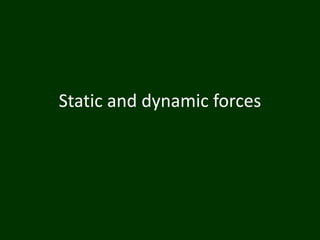The document outlines the differences between static and dynamic forces, highlighting key concepts such as load variation, response types, and complexity in analysis. It details how earthquake engineering focuses on horizontal motions due to their significance and discusses measures of ground motion like peak ground acceleration and the factors that influence it. Lastly, it covers topics related to soil behavior during earthquakes, including liquefaction types and effects, as well as essential seismic design principles.




































































































